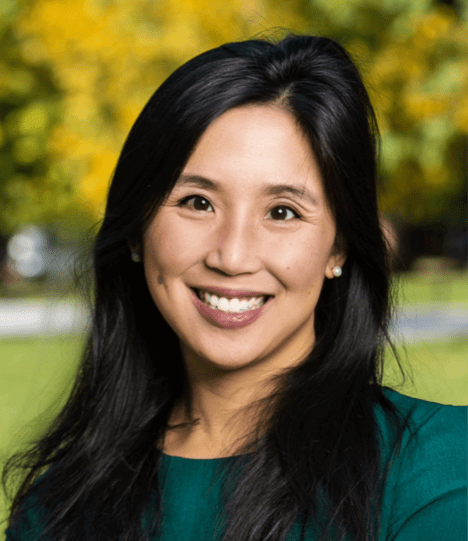Yi-Ching Ong Ph.D. ’10 will return to Stanford in July as the new executive director of the Haas Center for Public Service, succeeding Tom Schnaubelt, who served as executive director from 2009 to 2022. Schnaubelt left Haas in July to serve as a lecturer and senior advisor of civic education at Stanford’s Center on Democracy, Development and the Rule of Law.
In her role as executive director, Ong will lead organization strategy, oversee operations and manage the division of administrative tasks among other responsibilities. More than 1,000 Stanford students find service through the Haas Center’s programming and community connections each year.
Haas has not had an official director since Schnaubelt left, but several individuals at Haas have stepped up to take care of various tasks normally handled by the executive director to bridge the gap, according to Schnaubelt.
Explaining what drew her to the role, Ong wrote in a statement to The Daily that “Haas is widely known and highly regarded in the field of civic higher education for the breadth and depth of its offerings, and so when this opportunity came up, it was extremely compelling to apply.”
Ong is currently the Senior Associate Director of Experiential Learning of the Pace Center for Civic Engagement at Princeton University and Director of Service Focus. There, she has overseen more than 300 public service internships and fellowships per year and spearheaded the creation of Service Focus, now a flagship civic learning program that connects undergraduate participants’ coursework with hands-on experience over the summer.
“My experience leading these programs has allowed me to serve as a connector and a catalyst for faculty, staff, students, alumni and community partners,” she wrote. “It has been wonderful to support all of these stakeholders and think with them about how we can produce and apply knowledge in more responsible and effective ways, towards a more just and resilient world.”
Despite the thousands of miles between the coasts, Ong will be on familiar ground when she arrives, given her years at Stanford studying microbiology and immunology as a Ph.D. student.
As Ong prepares for stepping into the role, she wrote that she “want[s] to make sure [she has] a chance to hear from all stakeholders as part of envisioning the future of Haas.” Looking forward, Ong has identified political polarization and technological change as “areas of challenge where [she] think[s] Haas can play an important role.”
“An important element of this is understanding what it means to responsibly harness, anticipate, and respond to technological developments in the service of this mission,” Ong wrote. “And we are also challenged to create more inclusive communities and to prepare our students with skills in dialogue across difference that are needed more than ever.”
Formed in 1985, the Haas Center was originally located at Owen House on 552 O’Connor Lane. Its current building has been around since 1991 and was designed to look like a house, according to Schnaubelt, who called it a “home” for students. He said that he still hears from alumni who reminisce about sleeping on the couch on the third floor and spending time with friends. “The fun thing about it,” Schnaubelt said, is the “counter-normative” atmosphere that he said would change throughout the day as students came in and out the door.
By the time night rolls around, “You’ll see people in the different conference rooms and they’re all planning to save the world in some way,” he said.

Student interest in public service opportunities fluctuates across time, according to Ong, although at a base level, students consistently “yearn to make a difference.”
“The past few years have been a time of deep disruption, that have brought even more attention to divisions and inequities in our world… We are challenged as institutions of higher education to recognize and address this, and to help our students learn how to do so as well,” she wrote.
Historically, the Haas Center has integrated “exposure work” into New Student Orientation, which could entail activities like packaging food or events like a speaking engagement or a Cardinal Service fair for connecting with various social impact organizations on campus, Schnaubelt said. Approximately 800 students would participate in this activity, but the usual programming has not taken place at that capacity since before 2020.
Ong, too, noted that people in higher education are still navigating the ripple effects of COVID-19 in search of “a new equilibrium” after experiencing sundry disruptions in recent years.
Disruptions notwithstanding, Ong wrote that she knows students have many competing demands on their time and that she is eager to hear from the community about the challenges students have faced in trying to allocate time for service.
Tanner Christensen ’24, who sat in on interviews and presentations during the hiring process of Ong as a member of the National Advisory Board of the Haas Center, began his undergraduate career in 2020, when student instruction and activities were effectively remote across the board. However, through the Haas Center’s Frosh Service Liaisons Program, he said he was able to receive mentorship and learn about the principles of ethical and effective service.
“During that program, they really do emphasize how service can be for anyone, regardless of what career you’re going into, or what fields you want to enter, and how service can really allow you to give back to communities,” he said.
In the summer following his first year at Stanford, Christensen participated in a Cardinal Quarter with a nonprofit organization in Oakland, providing reentry services to the incarcerated. Today, Christensen is a peer advisor at Haas, a position he has held since his sophomore year.
Inevitably, aspects of the Haas Center will change with new leadership, Christensen said. “I’m excited to see the ways in which the center grows, expands and is more accessible to more students.”
